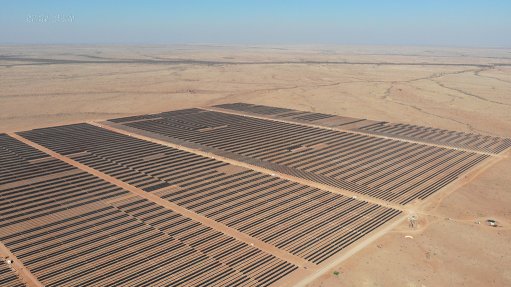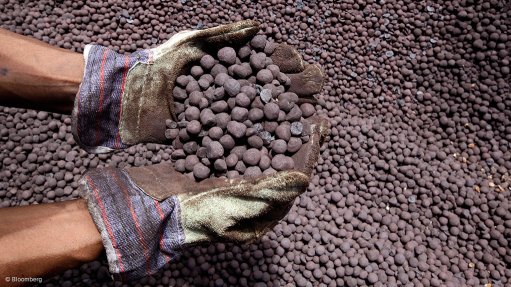Consulting engineering rewinds to yesteryear
Forget about the ‘apart ate’ regime. The fact of the matter is simply this: from 1910 (when the Union of South Africa was proclaimed) until the Second World War, the administration of South Africa was largely English, old boy.
There were local Prime Ministers and sovereign independence but the list of governors-general (nominally the CEO of the country) from 1910 to 1943 says it all: the Viscount Gladstone (1910–1914), the Viscount Buxton (1914–1920) and a whole lot of English names until, in 1943, Nicolaas Jacobus de Wet, followed by a string of Afrikaans names up to the independence of South Africa in 1961.
By 1961, the Nationalist government was firmly installed. Historically, all the consulting engineers were English. But, as the screws tightened over the next 20 years, all consultants scrambled to prove that, yes, they were actually Afrikaans or at least leaning that way. Failure to do so meant no government work.
Thus, firms like Robinson, Heath, Kennedy & Prichard Consulting Engineers became Robinson, Heath, Kennedy, Prichard & De Kok Consulting Engineers.
Then, in 1978, government decreed that all blacks would be citizens of ‘independent homelands’ in South Africa. Homelands which were declared independent were Transkei, Bophuthatswana, Venda and Ciskei. Now you needed no crystal ball to see that each of these ‘countries’ needed a national legislature, roads, infrastructure, training colleges, irrigation schemes and so on . . . all financed by government and all of which required the services of members of built environment professional teams, particularly architects and consulting engineers. Much of the work was dished out to Afrikaans architects and consulting engineering firms (regardless of their ability) but, in some cases, in the far-flung reaches of the Eastern Cape, South African English firms got the business. One of the firms that was so lucky employed me.
Government work was locally administered by the local regional representative of the Department of Public Works (DPW). This man (all were men) and his fellows in each region did sterling work. They were all solid Nationalist government supporters and all very solidly Afrikaans bred. This meant that there was a degree of inflexibility in their attitude and a rigid sense of what was right and what was not. In administrating contracts, they were painfully fair and honest – corruption was not a possibility. They were perfect engineering administrators. Our site meetings were models of cooperation – they spoke Afrikaans, we spoke English, minutes were in English, drawings in English and all operations manuals were in both languages, as were equipment labels.
Thus, while a state of emergency was in place in South Africa, we worked on the construction of new national legislatures, roads, infrastructure, training colleges, irrigation schemes, and so on. Every so often, unfortunately, the DPW would send one of the party faithful (a male National Party representative) to make sure that the department’s local representative was doing his job according to National Party policy.
The person was supposed to enforce change within the consulting engineering profession but had little or no actual training for new areas of responsibility. He outranked the department’s local representative and would attend site meetings and insist that all communication be in Afrikaans only. Minutes as well. Drawing notes as well. That certain, Afrikaans firms got contracts. It was hell. But like all things, like the English administration, it all passed and was gone forever. Or so I thought.
Recently, I was on a project where, hey, all the work has been dished out (regardless of their ability) to black firms. And guess what? In a similar form, there was a representative of the party faithful (a male African National Congress representative) who was making sure that everybody toed the line as far as black economic empowerment and labour representation and so on were concerned and that everybody had the many documents government wants them to have if they are to design power systems correctly . . .
I thought, well, this reminds me of something. Yes, crayfish in a bucket. The bottom crayfish crawls over all the other crayfish to reach the top of the bucket and then falls back to crawl again. Nothing has changed in 30 years.
Comments
Press Office
Announcements
What's On
Subscribe to improve your user experience...
Option 1 (equivalent of R125 a month):
Receive a weekly copy of Creamer Media's Engineering News & Mining Weekly magazine
(print copy for those in South Africa and e-magazine for those outside of South Africa)
Receive daily email newsletters
Access to full search results
Access archive of magazine back copies
Access to Projects in Progress
Access to ONE Research Report of your choice in PDF format
Option 2 (equivalent of R375 a month):
All benefits from Option 1
PLUS
Access to Creamer Media's Research Channel Africa for ALL Research Reports, in PDF format, on various industrial and mining sectors
including Electricity; Water; Energy Transition; Hydrogen; Roads, Rail and Ports; Coal; Gold; Platinum; Battery Metals; etc.
Already a subscriber?
Forgotten your password?
Receive weekly copy of Creamer Media's Engineering News & Mining Weekly magazine (print copy for those in South Africa and e-magazine for those outside of South Africa)
➕
Recieve daily email newsletters
➕
Access to full search results
➕
Access archive of magazine back copies
➕
Access to Projects in Progress
➕
Access to ONE Research Report of your choice in PDF format
RESEARCH CHANNEL AFRICA
R4500 (equivalent of R375 a month)
SUBSCRIBEAll benefits from Option 1
➕
Access to Creamer Media's Research Channel Africa for ALL Research Reports on various industrial and mining sectors, in PDF format, including on:
Electricity
➕
Water
➕
Energy Transition
➕
Hydrogen
➕
Roads, Rail and Ports
➕
Coal
➕
Gold
➕
Platinum
➕
Battery Metals
➕
etc.
Receive all benefits from Option 1 or Option 2 delivered to numerous people at your company
➕
Multiple User names and Passwords for simultaneous log-ins
➕
Intranet integration access to all in your organisation


















